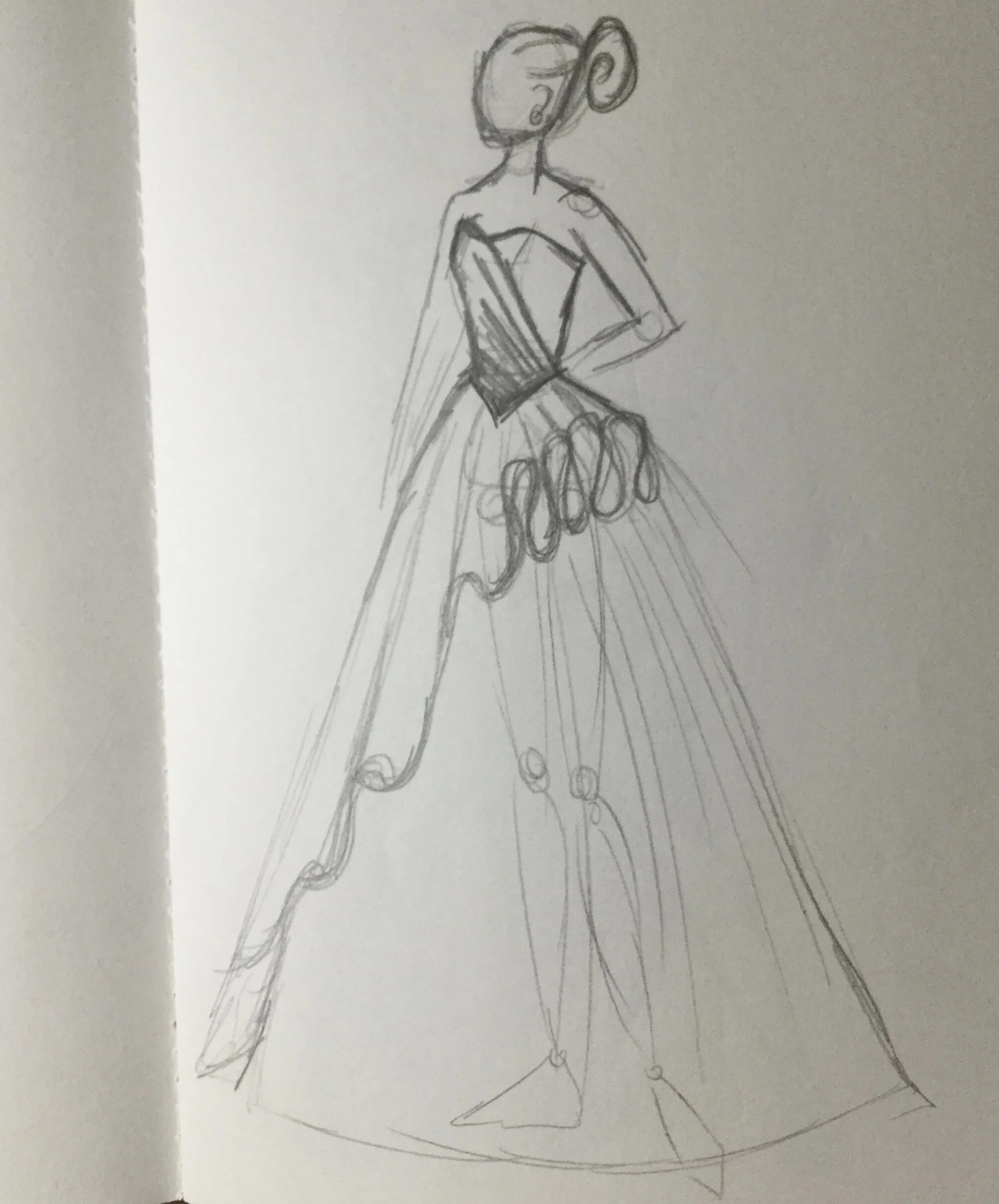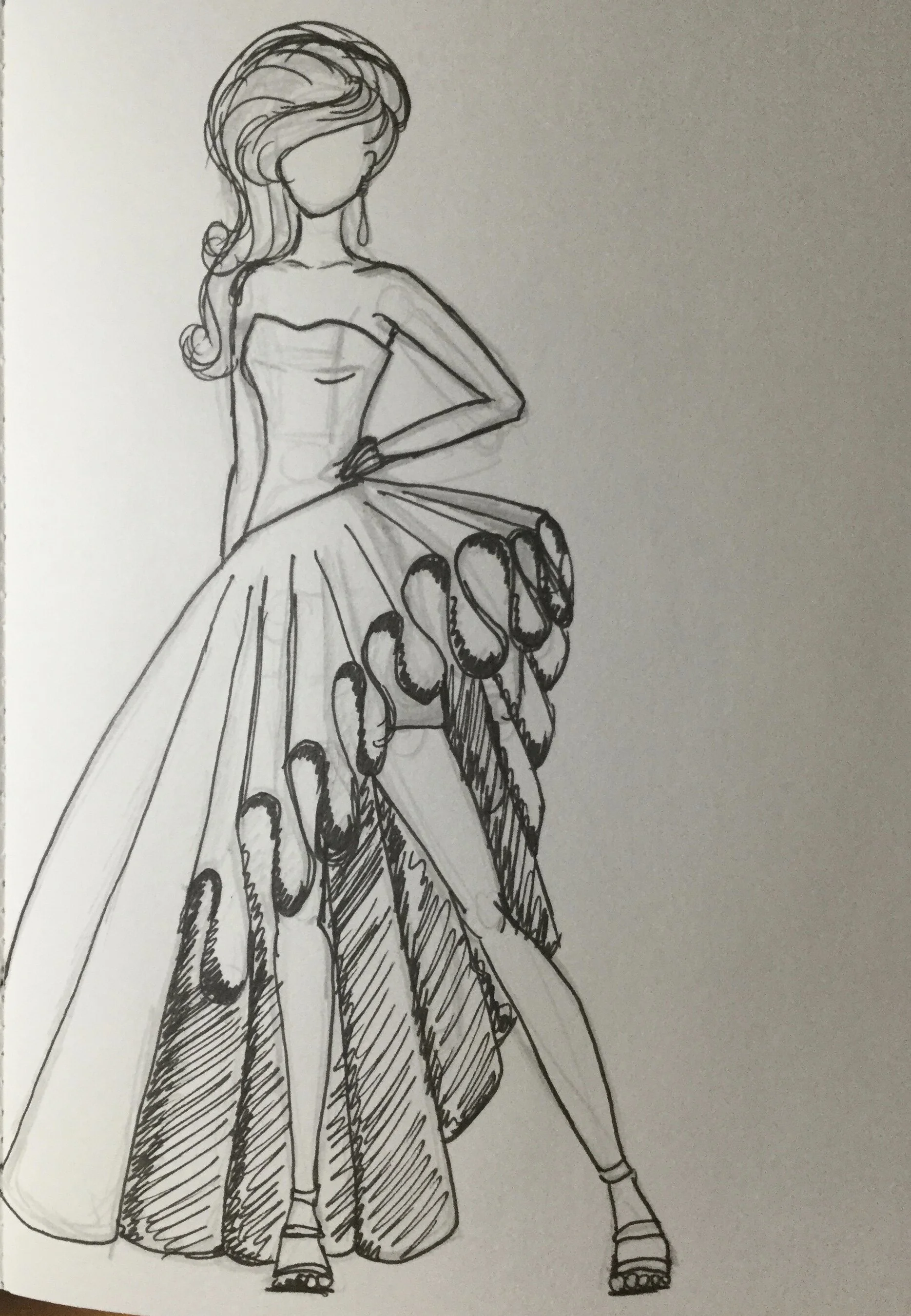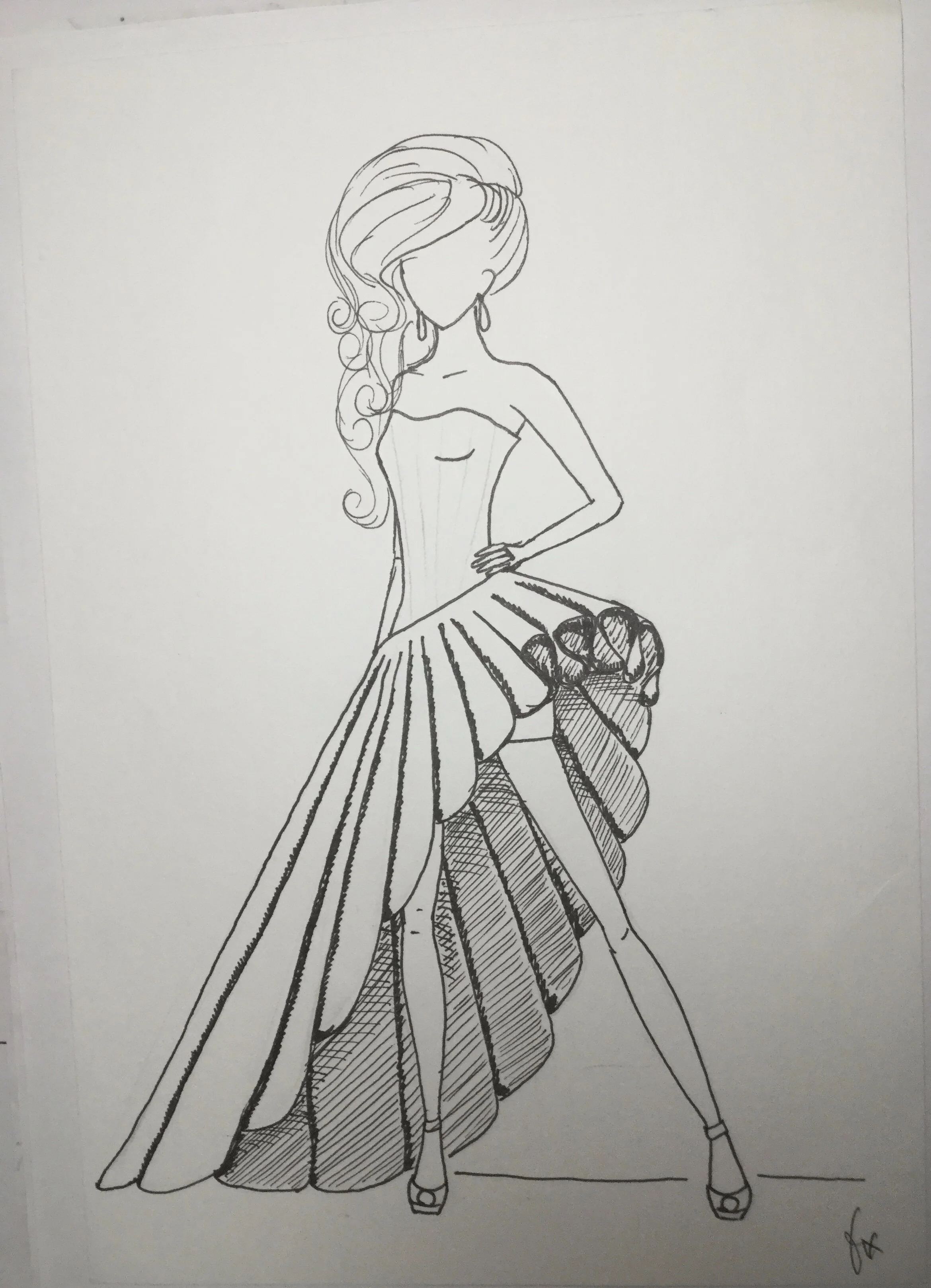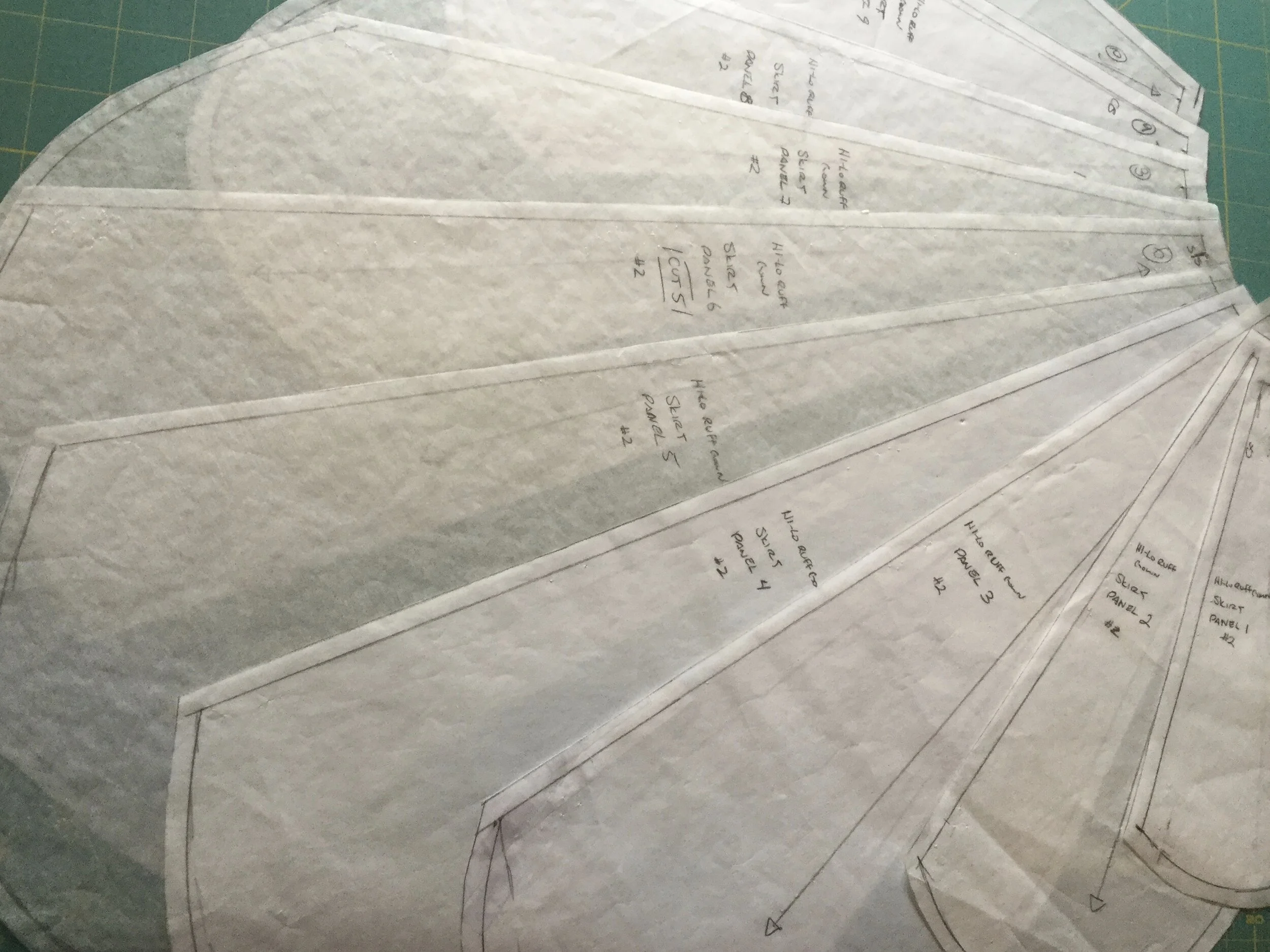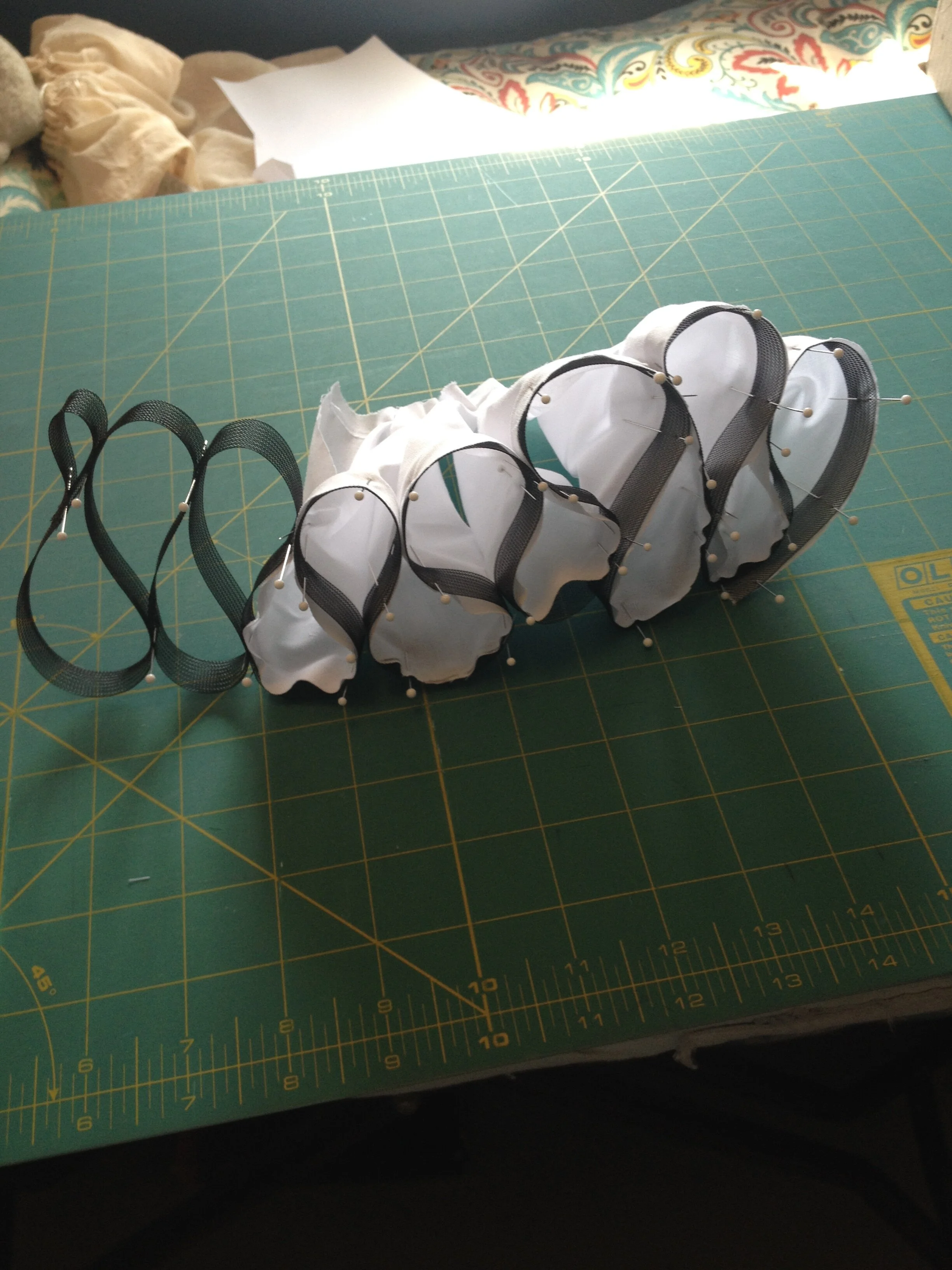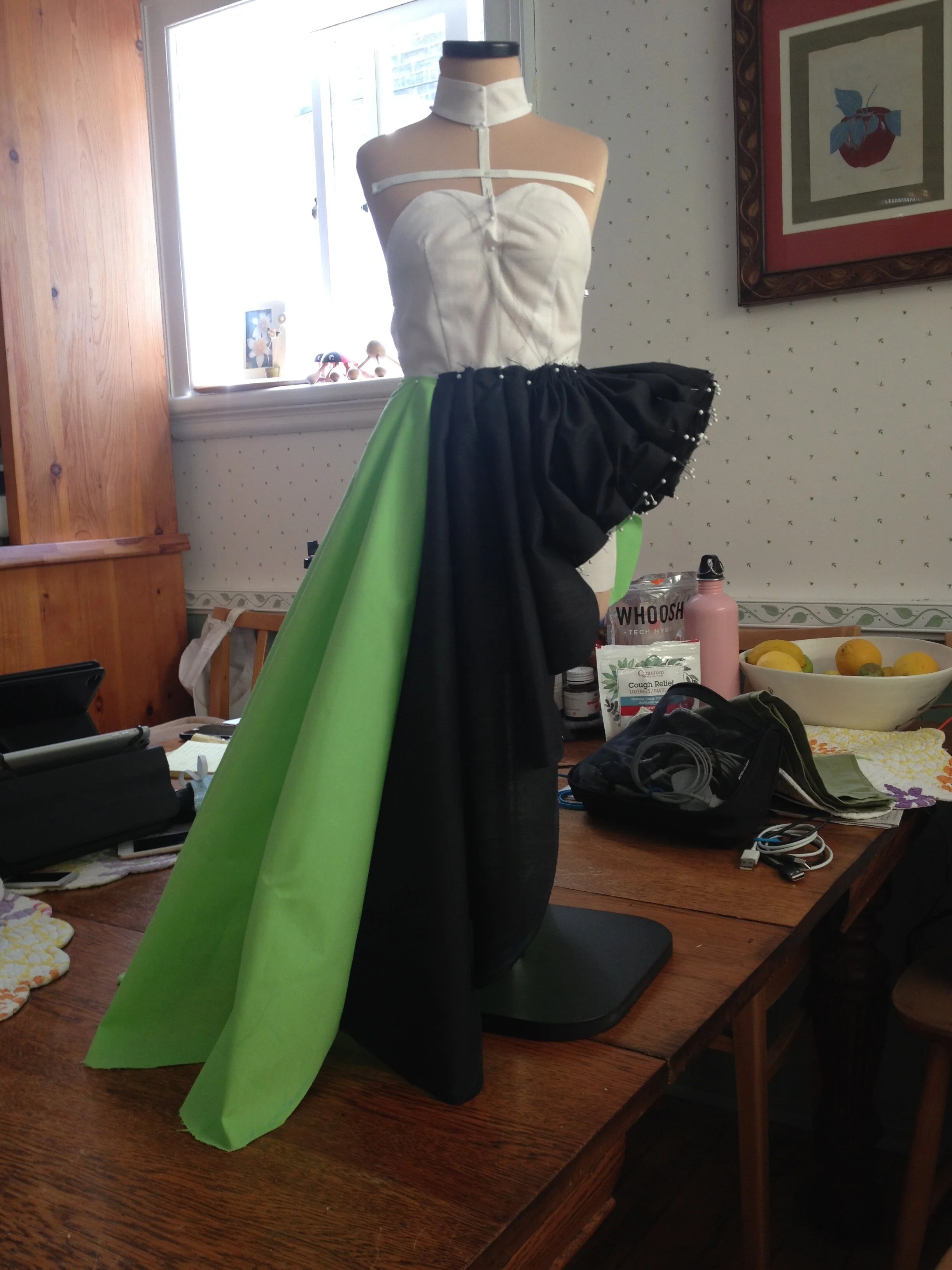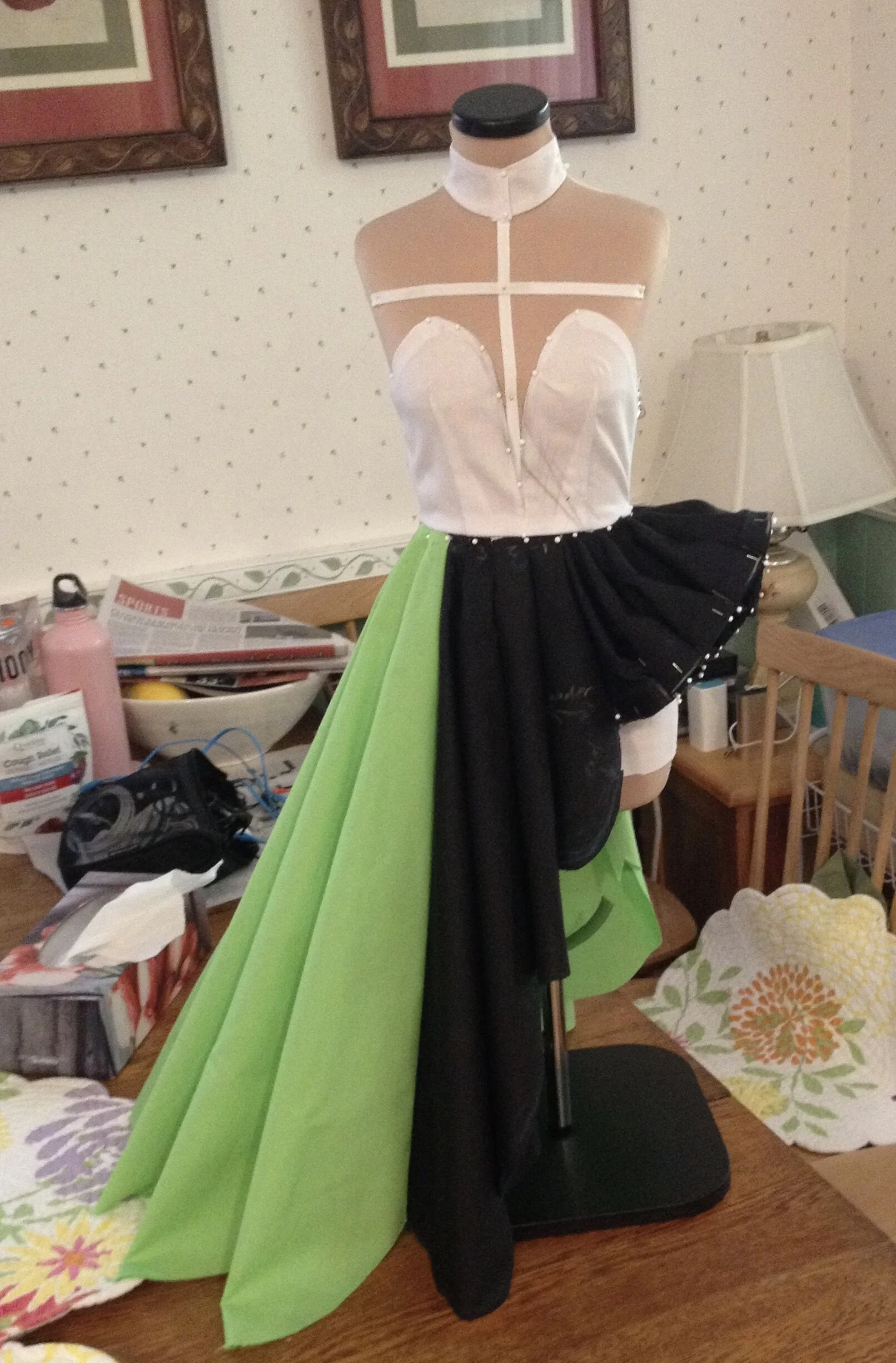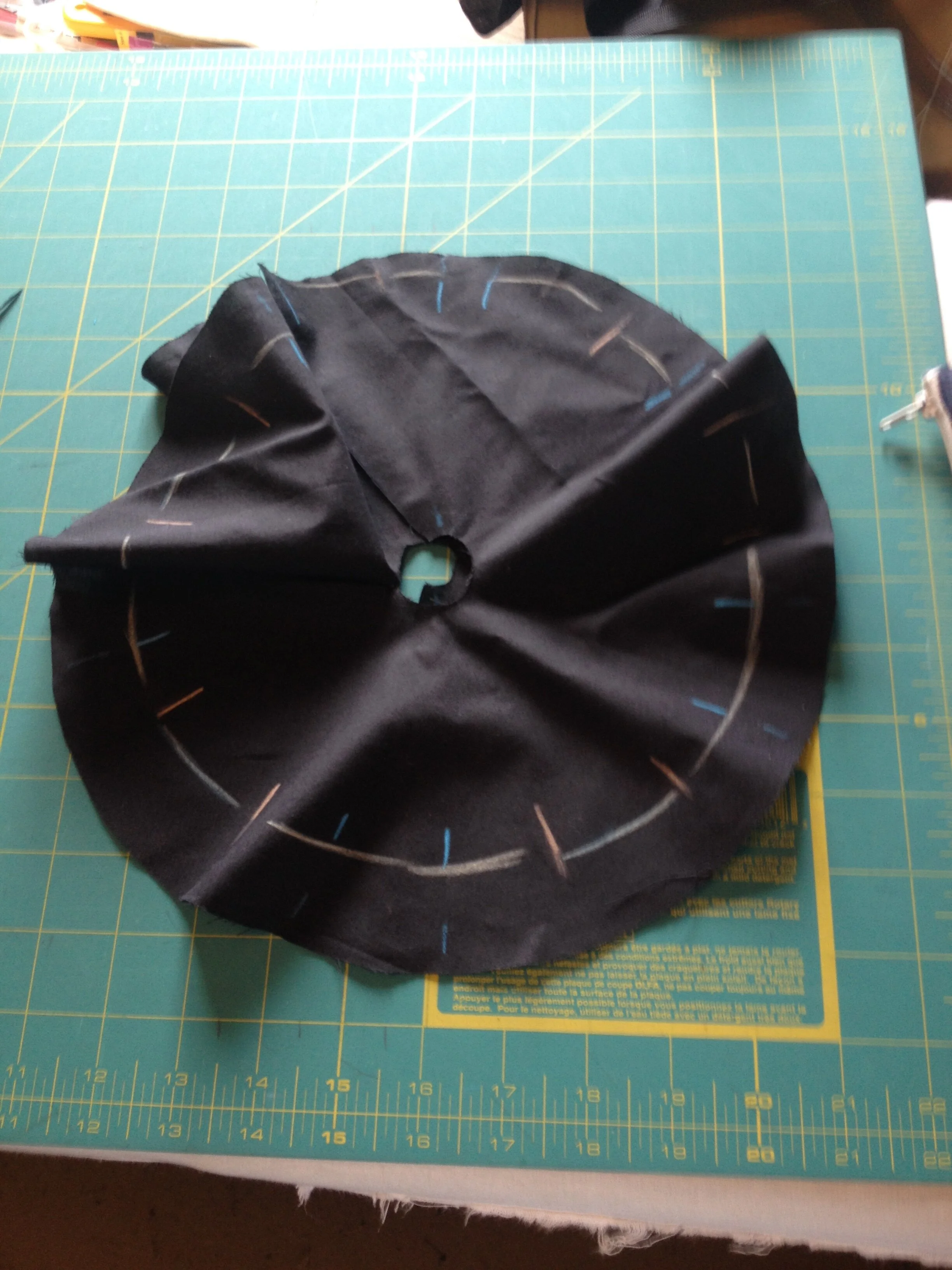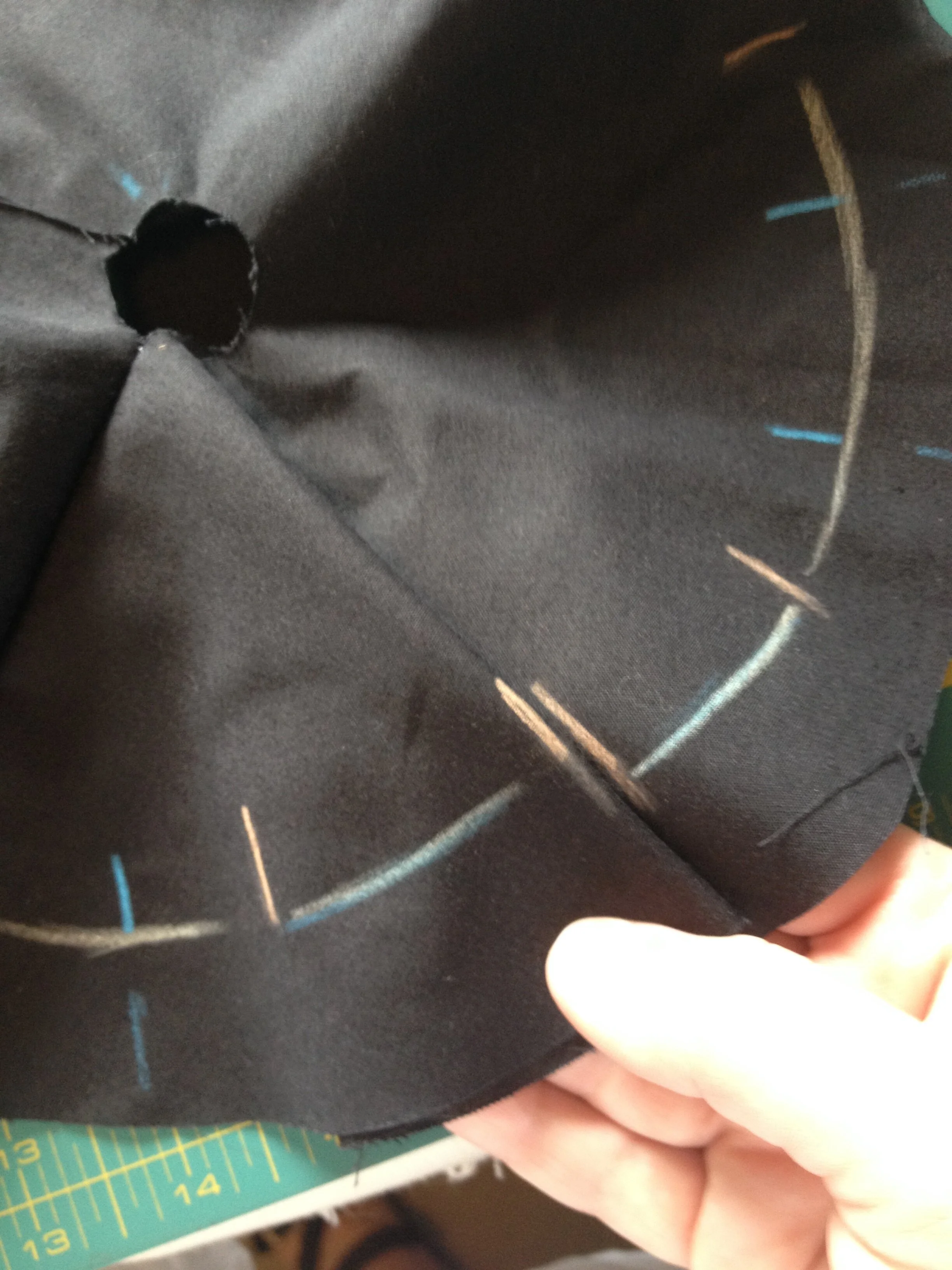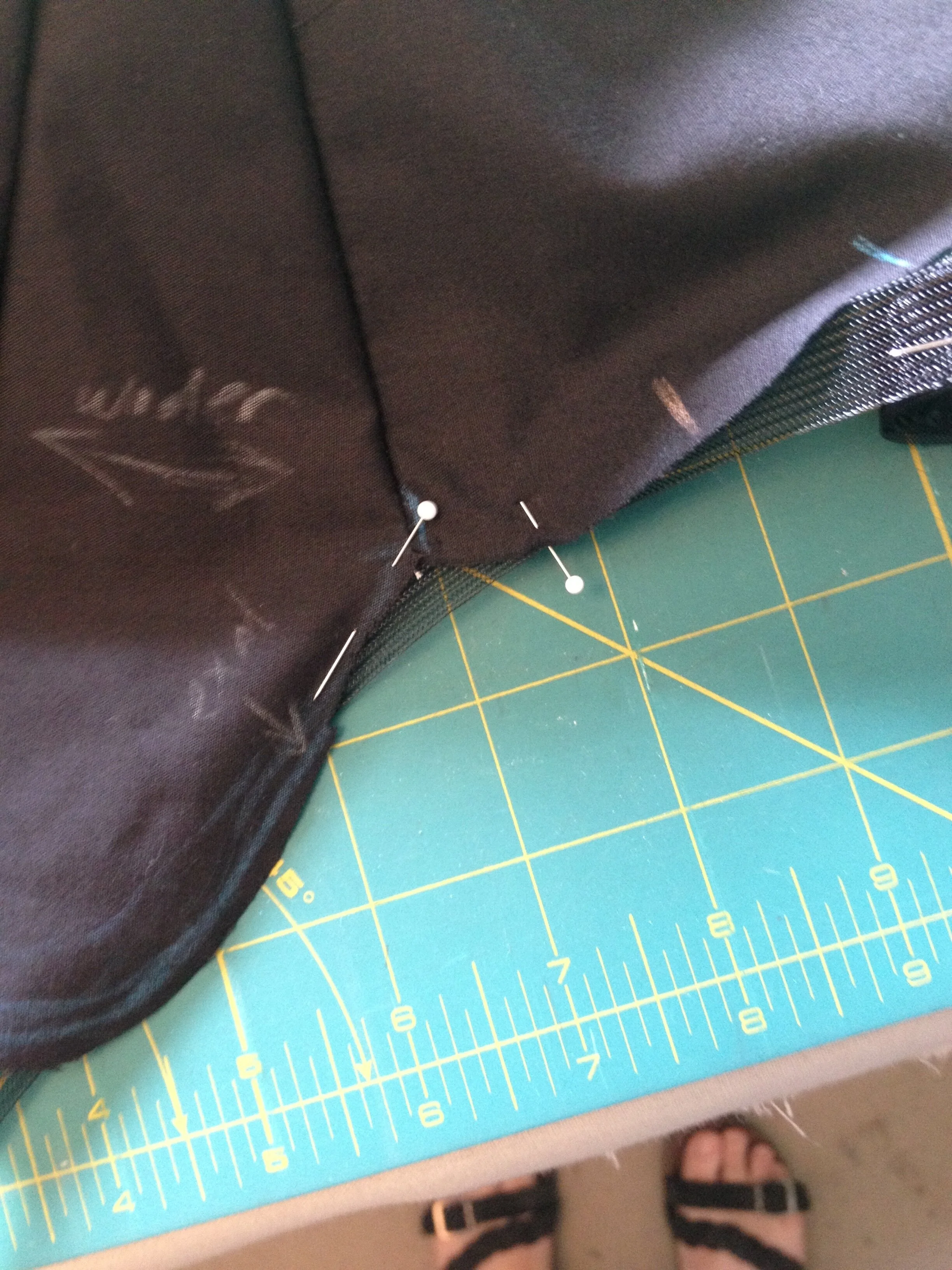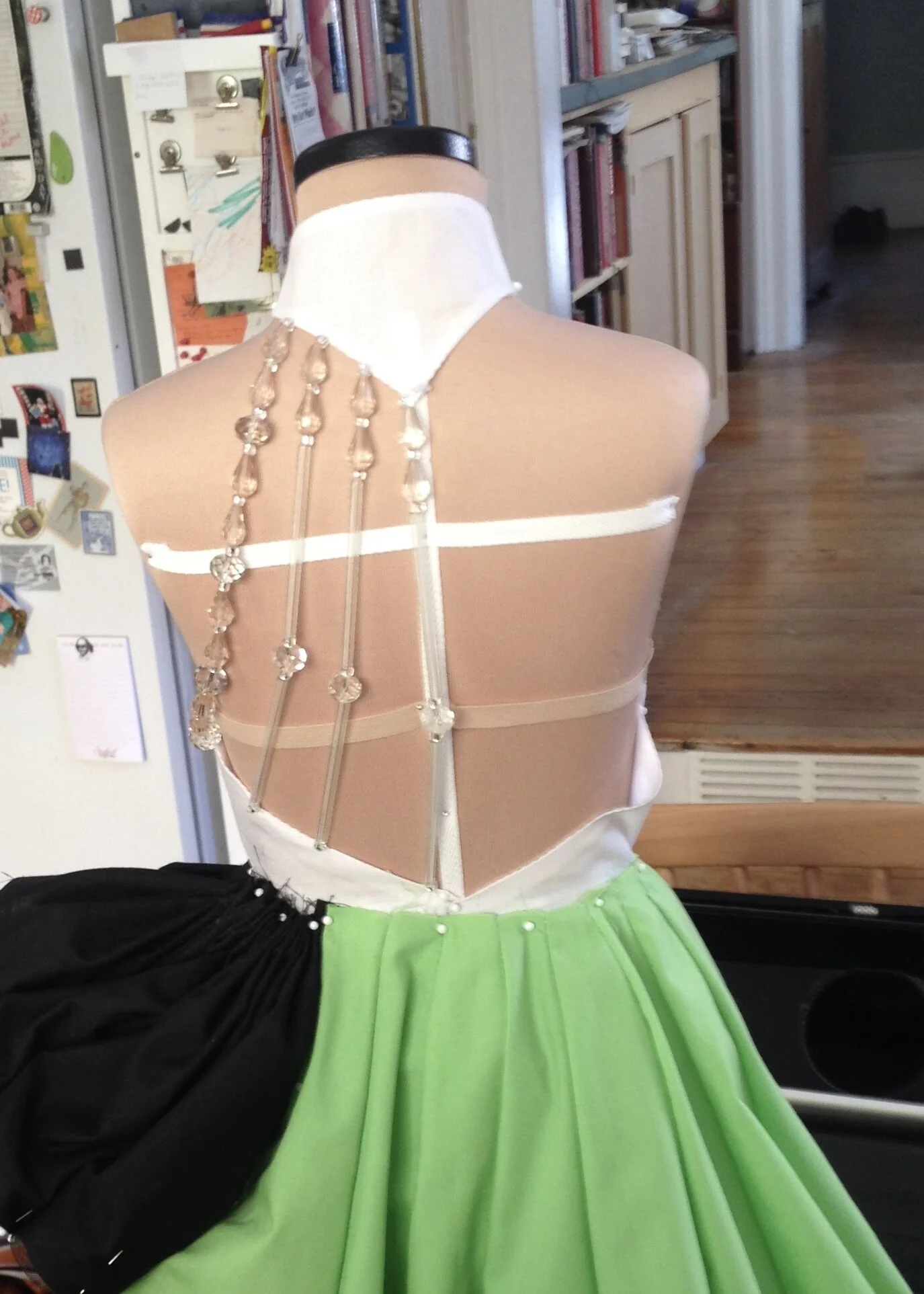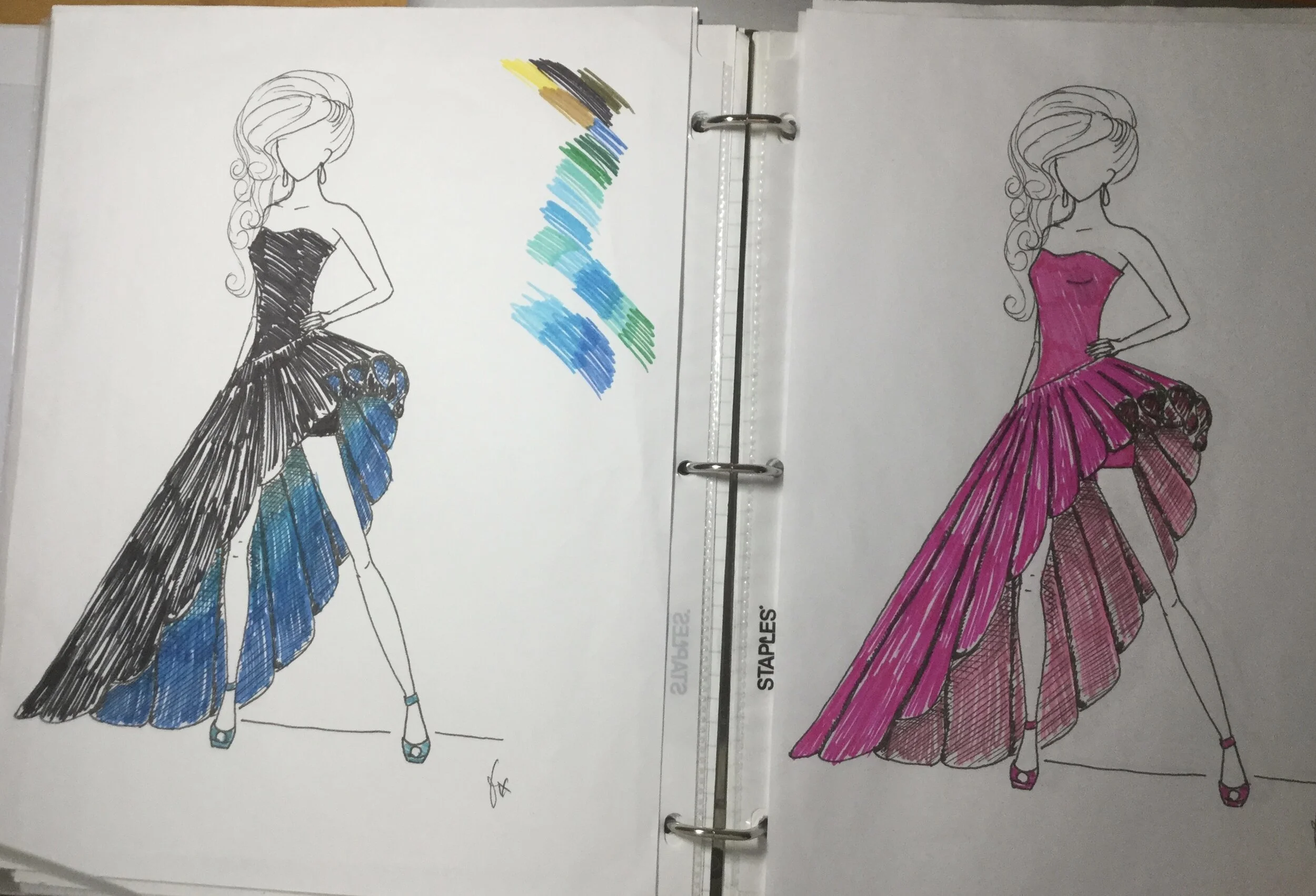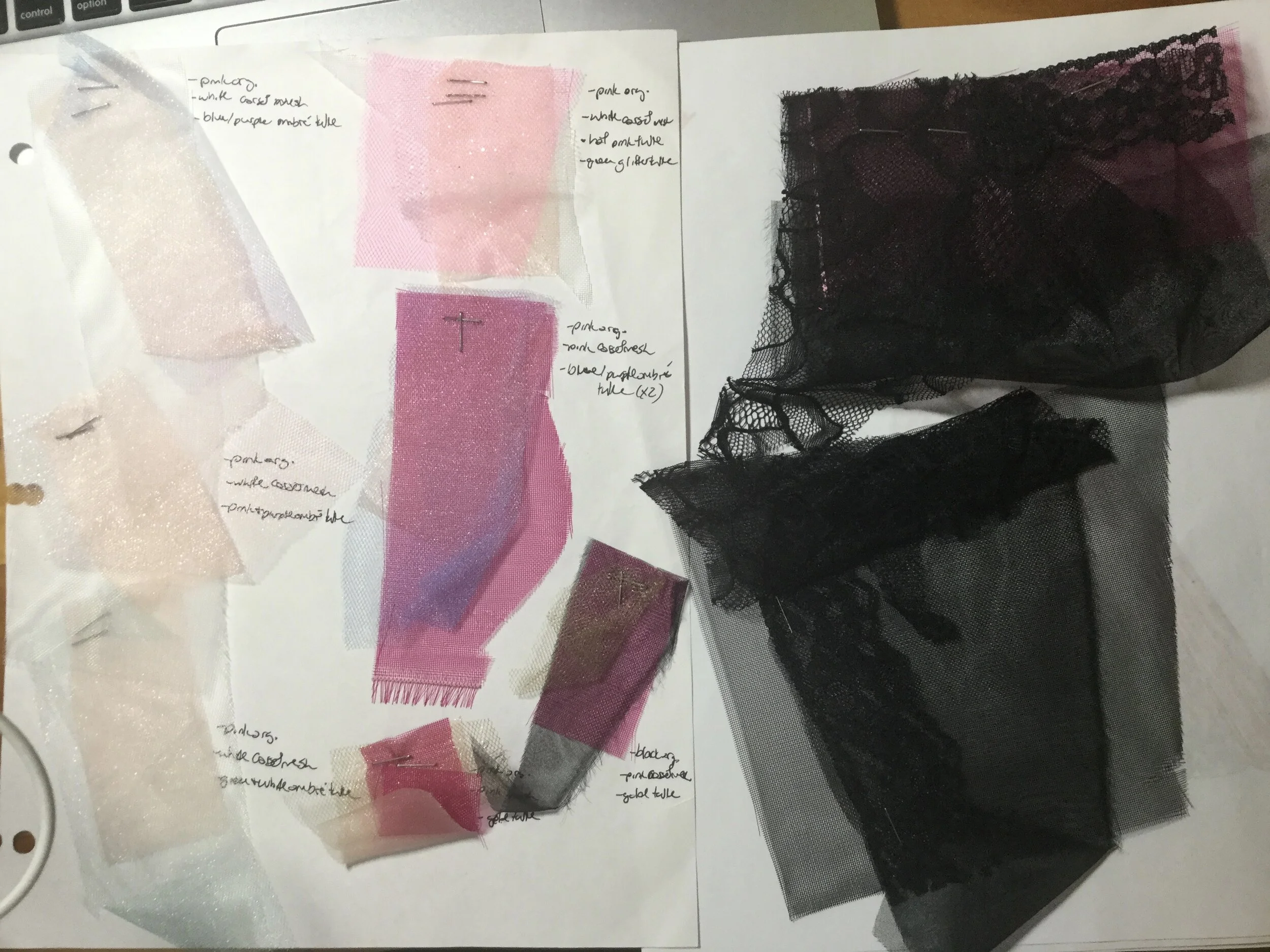Katherine
The dress that broke my brain.
Part One
Katherine began life as one of those “is this physically possible?” ideas. I had seen pictures of circle skirts made from stiff, teardrop shaped panels which stood out from the body in perfectly even ripples. Of course, rather than just make a skirt like that, I thought it might look cool if it was shorter on one side, perhaps even short enough to almost stick straight out like a tutu. I quickly did a terrible sketch that looks nothing like the finished product but meant I didn't need to rely on my brain the remember the idea as it was now on paper. A day or so later I rethought it a bit, figured out how to draw what I wanted and did another, and in my opinion much better, sketch. Huzzah!
The first thing to figure out was the skirt. This is the part that stumped me for longer than it should have; not because I am so confident in my own brilliance and can't conceive of my not getting something right on the first try, but rather because my first idea did in fact work and yet for some reason I had to explore six other options before realizing this.
The main part of the skirt was easy enough. I drew a teardrop shaped panel and, through a bit of trial and error, figured out how narrow to make it at the waist line and redrew the hemlines of the shorter panels to gradually shorten them to meet up with the “ruff” part of the skirt (as I began to think of it). I ended up using ten different pattern pieces, all but one of which feature a lopsided curve at the hem, and fourteen panels in total to make the main part of the overskirt. With this shaping figured out and actually looking a lot like my drawing I was feeling pretty clever.
The feeling didn’t last long.
Soooooo... the fist idea was to cut a circle and open it up along the radius so that the centre would sit at the waistline and the fullness would be shaped into the ruff. I pinned a strip of crin along the outside edge to stiffen it and help it keep the shape I wanted and was overall pleased with the results. However, the full circumference of the circle wasn't long enough to cover the distance I needed it to, at least not with nice big folds which would look similar to the rest of the skirt.
So, what do you do when something doesn't quite work? Do you stop and think a bit, maybe figure out where to tweak it to make it work? Or, do you spend the next two days cycling though several other ideas, each less effective than the last?
The first attempt. So close and yet so far.
*sheepish look*
So, the main problems I was getting hung up on were how to keep the outer edge straight so that the folds would be even, the inner edge short so it would fit into the space left at the waistline and how to expand from this very narrow waist to a very full hem in a very short distance as the shortest part had to be about 10cm from waist to hem.
This can't be achieved with:
a long rectangular piece with darts
trapezoidal panels
even more tiny and bizarrely shaped teardrop panels
a rectangular piece with godets
It can kind of be achieved with:
cartridge pleating
gathering
Neither looked as good or as clean as I wanted.
*siiiiiigh*
In a last ditch effort to get the look I really wanted, I came back around to the idea of using a circular piece. This was when the florescent bulb above my head stopped flickering and finally went on. What if I solve the problem of needing more fullness with...TWO CIRCLES!
So yeah, I overcomplicated things a bit there.
I went about figuring out how to shape the circles to achieve a smooth transition from the rest of the skirt into the shortest part. I pinned the folds of the ruff into a position that looked nice, marked the position of each pin and shaped the hem edge. I then redrew the hemline and marked and colour coded all my pins (a lot of work which, in the long run, all proved a bit meaningless as most of the folds were shifted and tweaked and made to fit on the final dress) and drew up my new pattern pieces. The final pattern is in three pieces, each about three quarters of a circle, to add even more fullness. For the time being, all was good. The ruff had other plans, but I did not know that yet.
Meanwhile, the overall look of the dress was going through a few substantial changes. First, I thought the bodice from the original sketch was bit meh compared to the skirt and after all the attitude the ruff had given me, I was not in the mood to figure out how I wanted an asymmetric waistline to work. I tried draping the bodice with a complicated collection of tiny panels and also considered just draping a swoosh of some other fabric over top for texture; frankly neither of these were particularly inspiring. I eventually settled on a deep V down the centre front and a low back. In itself, this isn't much more exciting than my other ideas, but I had also hit upon the notion of a collar that was attached to the bodice with straps of some kind down the back.
The other major change came about when I returned to the idea of using round pieces for the ruff. I was having an issue with the body of the ruff collapsing between the waistline and the crin at the hem. As a possible solution, I tried adding a layer of corset mesh to the ruff pieces on the final mock up instead of the strip of crin and this ended up working beautifully. As I had been figuring out the skirt pattern I had been considering how I would stiffen the panels of the skirt and how it would all be put together and finished as the inside of the skirt would be visible. Using corset mesh on one part of the skirt begged the question: why not use it for the rest of the skirt? And as long as we're doing that, why not make the whole skirt see through! And why not change from the dark, saturated colours I had been imagining to something light and airy? Why not indeed.
In the end, I let Fabricland decide. The sale table gods led me to a light blue fabric with white and silver printing which looked kind of cool and suited the design. I found complimentary fabrics and started putting together the final design. She took a turn I was not expecting, but that’s part of the fun of following ideas wherever they take you.
Time to cut!
